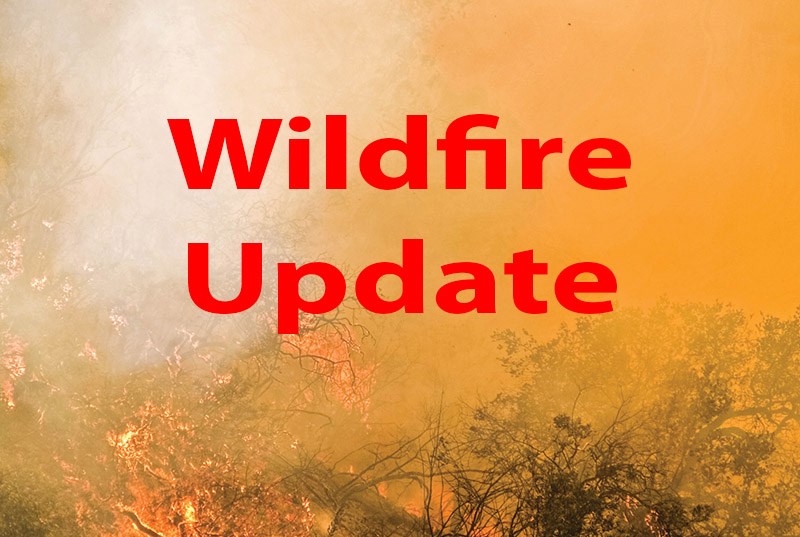REGINA — The Saskatchewan Public Safety Agency is still working to contain a number of fires in the northern portion of the province, as dry conditions and storms continue to create concerns for fire crews.
Steve Roberts, vice-president of operations at the Saskatchewan Public Safety Agency, provided an update on the situation to the media on July 16.
A total of 137 wildfires are currently active in the province, an increase from 129 reported yesterday, with 26 considered not contained.
Roberts said the jump in numbers can be attributed to a storm cell that passed through the north last night, igniting several more fires and “likely more by the end of today.”
The provincial fire ban will remain in place for at least the next few days, as continued dry conditions still pose a concern for officials despite approaching storm systems on radar.
“Weather will remain hot and dry for the majority of the province except for the extreme far north,” said Roberts. “At this point, we do not believe there will be any significant fire-ending events.”
Wind shifting from the north will continue pushing smoke to the south, and the SPSA anticipates that air quality will remain compromised for at least another 24 hours.
“That [shift] has cleared off some of the fires in the north, which will allow some crews to get a better tactical advantage on a few of those fires,” said Roberts.
Crews continue to work hard to contain active fires, including the Lock fire affecting the communities of St. George’s Hill, Michel Village, Dillon and Buffalo River Dene Nation, which is 23,290 hectares in size.
“The fire did not move closer [to Michel Village], even though we had some overnight wind,” said Roberts. “The fire remained fairly secure and we have not seen any significant growth in the last 24 hours.”
Currently 63 evacuees from the Loch fire area are now being housed in North Battleford, with others in Lloydminster.
The White fire, a new addition to the active list located north of Candle Lake, is posing a threat to the Whelan Bay recreation site and resort community. Eight evacuees have already left Whelan Bay and are now housed in Prince Albert.
“Efforts have been to secure the side of the fire that is closest to the community to prevent spread in that direction,” said Roberts. “Currently we understand the community is still recommending residents leave and we have supplied crews to set up sprinkler systems [to protect the area].”
The Forks fire southwest of Beaval has been redesignated as uncontained, with helicopter and air strike crews working to regain control over the situation, and the Mule fire south of Stanley Mission is now posing a threat to the community.
Narrow Hills Provincial Park, located north of Smeaton, is also now on standby for evacuation, as the Harding fire has reached 14, 297 hectares and is encroaching on the southern part of the park.
“Our expectation is that the winds will be from the north, which will keep the fire from moving into the park any further over the next 24 hours, [but] we have asked the park to identify folks in the southern half of the park that may have to evacuate due to smoke,” said Roberts.
The SPSA is also warning residents that further highway closures will be taking place due to fire encroachment and smoke-related visibility concerns. Updates will be provided by the Highway Hotline.
This includes portions of Highway 2 North by La Ronge, Highway 106 near Smeaton, Highway 963 near Candle Lake, Highway 102 and 116.
“We have put out a Sask Alert asking the public to curtail non-essential travel to the north,” said Roberts.
SaskPower crews are also working on line damage causing the power outage near the Wollaston Lake and Hatchet Lake areas, with no estimated time of repair yet.
SaskTel crews are on site working to restore service for nine communities in the Southend and Wollaston Lake areas, as a fiber line was damaged by fire. Wireless services are still operating, but under a large demand that is causing congestion.
Roberts said the SPSA has added 58 local firefighters to join the crews fighting the blazes today, as well as obtained pumper engines and crews from fire departments to assist with community protection near South End and Dillon.
The SPSA has also accepted a large retardant aircraft from the Northwest Territories, to aid in air strike containment efforts at La Ronge.
No other assistance requests have been activated, said Roberts, but officials are monitoring the situation and considering options as need arises.
“All our crews and equipment and resources are deployed based on priority, and that is based on threats that the fire poses to the people, resources and infrastructure of the province,” said Roberts. “So yes, we will continue to move as fires become more of a risk or a threat.”




